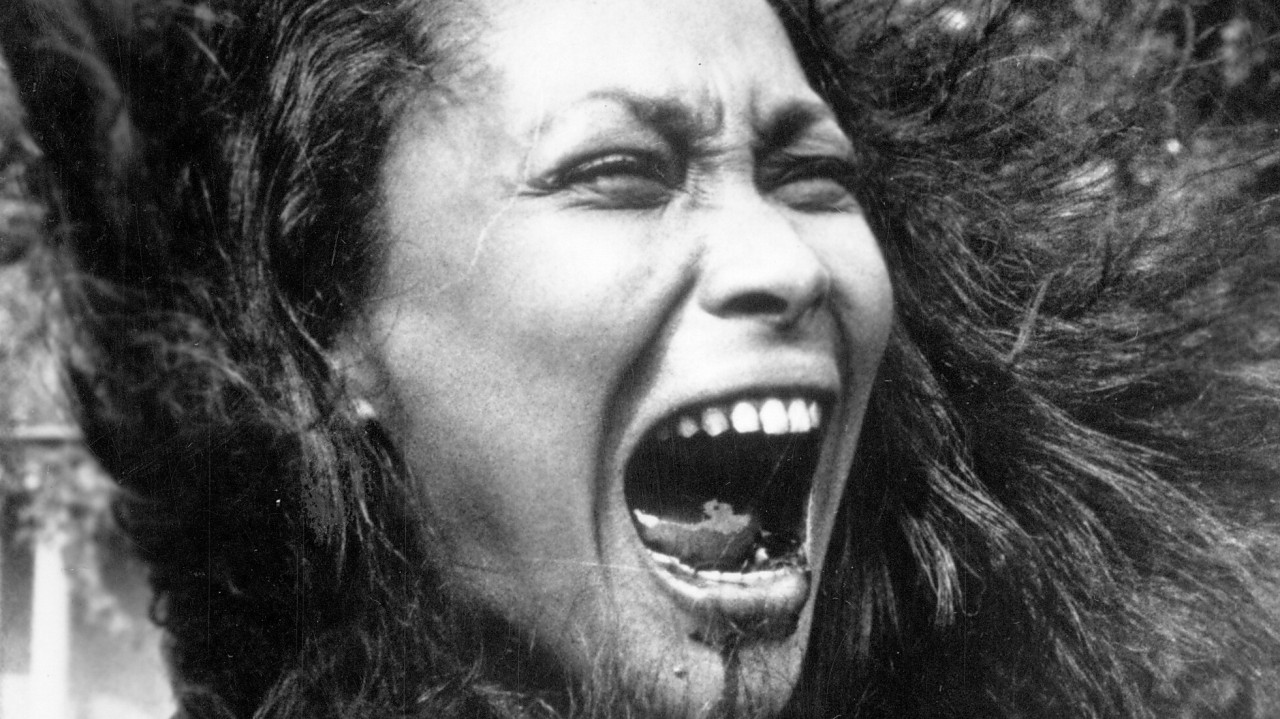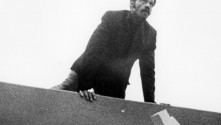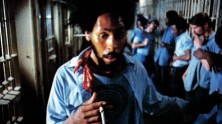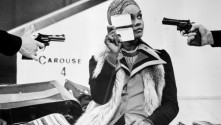
Say It Loud!
The Black Cinema Revolution
At the beginning of the book based on his incendiary film Sweet Sweetback’s Baadasssss Song, Melvin Van Peebles quotes a traditional medieval prologue: “Sire, this is not an ode to brutality that the artist has invented, but a hymn that comes from the mouth of reality.” Peebles’ directive was eloquent and explicit, and his first feature helped light the match that would shortly ignite not only the blaxploitation movement, but a revolutionary era of firsts for black Americans in cinema. During the early 70s, more people of color were involved in the movie industry than at any other time in history. With very low budgets and sweeping popularity, blaxploitation films were highly lucrative investments for both languishing independent studios and bigger players—like MGM and Warner Bros.—so for once, black filmmakers and actors wielded an artistic and economic power, exposing the discriminatory cracks in Hollywood’s conservative framework.
Before this, the struggling vestiges of black cinema that existed fought to be recognized, lacked funding and were often relegated to a limited “ghetto” theater circuit. By the 60s, black actors were more regularly securing roles beyond domestic help, yet—even when discussing racism—the image was still largely “integrationist” and well behaved. And even these roles were few and far between. "When a good part for a Negro actor does come along, they always offer it to Sidney Poitier," director Bill Gunn told Variety. "If he turns it down, they rewrite it for a white actor." Many of the authentic visions of the black experience that were being made—such as Nothing But a Man (1964) or The Cool World (1964)—were still being directed by white filmmakers.
The momentum and progress of civil rights and the Black Power, Black Panther and more radical, militant movements energized black artists to reclaim power over their own image and activated institutions like UCLA to make it financially possible for students of color to study filmmaking. With Hollywood at its most freewheeling and a new ratings system that replaced the Production Code in 1968, even more restrictions and barriers were removed, and a renaissance was born.
The initial seismic wave came in the form of so-called “blaxploitation.” Though now not generally considered derogatory, the quick industry moniker “blaxploitation” was often derided and considered racist since white exploitation films did not have to designate their racial identity. Nevertheless, this insubordinate movement conspicuously reclaimed genres formerly relegated to an all-white cast, most often in the flashier action, thriller and horror varieties. After years of struggling to fit into roles Hollywood deemed acceptable to white audiences, black filmmakers and stars finally did not have to subscribe to any particular genre, format, role or message. The array of black personas suddenly filling the screens only made their previous exclusion more glaring. Thus, the most thrilling and galvanizing roles—Sweetback, Shaft, Coffy, Foxy, Sheba, Cleopatra Jones, Super Fly’s Youngblood Priest—were those that called for reactionary, independent authority and powerfully claimed that most coveted of Hollywood’s positions: the lead. From this anti-establishment, superheroic platform, they could say whatever they wanted to say at a viscerally high volume. It was catharsis.
Sex, violence and action spoke loudly and often took center stage. The films not only had a rudeness and antagonism, they had a rawness, vigor and urgency, reveling in longer, more graphic sex scenes and stark violence with radical political statements only inches from the surface salaciousness. In addition to confronting racism—and in the case of the Pam Grier films, sexism—many focused on the new scourge of drug addiction as another disease transmitted from white elites to poor black communities. More importantly, they were depicting the flourishing subcultures of the urban ghetto—essentially a foreign land to middle-class mainstream audiences—illustrated within an alluring new groove featuring revelatory music and fashions accompanied by afros, slang and the stealthy code of the street. Black audiences were electrified by seeing their experiences reflected on screen, whether as reality or fantasy or a mix of both, and the youth, in particular, soaked up the fashions and a proud, independent, nonconformist attitude.
Many white directors also participated enthusiastically in the new movement—including Roger Corman, Jack Hill and William Girdler—but it was the black filmmakers who were artistically, economically and politically making the most of the opportunity. A nonconformist, therapeutic space had opened up, inviting reinvention, re-creation and re-education. Black directors made it an imperative to employ many people of color behind the scenes, and there was a shockingly endless number of “firsts” for African Americans in the industry during this time. While many careers in film and music were either launched or enjoying the height of their fame and productivity, innovative polymaths like Bill Gunn, Melvin Van Peebles, Gordon Parks and Sun Ra found it the opportune moment to also add filmmaking to their versatile plates, both of the blaxploitation variety as well as independent films, documentaries and experimental work like Gunn’s masterpiece Ganja & Hess and Ra’s futuristic hybrid Space is the Place. Filmmakers like Parks and Kent Garrett had a head start in the journalistic world that led to their documentary creations. Others, like Amiri Baraka, came to film through activism. Meanwhile, actresses of color like Pam Grier and Tamara Dobson were blasting through uncharted territories no woman had been able to enter. And then there was the even more rare phenomenon of female filmmakers working against the odds, like Madeline Anderson, who began her career in the late 50s and produced socially progressive documentaries focused on the voices of the marginalized.
By the mid-seventies, the tide was ebbing. In addition to an assault on blaxploitation pictures by organizations distressed over images of African Americans they deemed too transgressive and destructive, Hollywood had discovered the cost-effective crossover power of the blockbuster and no longer needed to appeal specifically to black audiences. The independent, rebellious filmmakers and actors of this revolution were also often too fiery for the industry or could not revert to more milquetoast fare. Some simply exited altogether or carried on making independent work for smaller, more select audiences. At the same time, the motivation and urgency of finally getting to cinematically take revenge on a racist culture was also waning. As actor Fred Williamson articulated it many years later: “We don’t need to make ‘get whitey’ pictures anymore, but that’s what we needed at that time. We needed a way to fight back.”
The effects of the 70s explosion was far-reaching, and many of the films are still deeply resonant today—both as stinging reflections on current events and as inspirational works of art. The giant strides made during that period positively and permanently affected the colors of the current cinemascape inside and outside Hollywood, with many more, much needed milestones yet to come.
On two separate evenings, the Harvard Film Archive proudly welcomes Kent Garrett and Madeline Anderson to screen and discuss their remarkable documentary work from then and now. – Brittany Gravely
















